35 OTC Medications You Should Store
This is my friendly reminder about the 35 OTC medications you should store now. There are so many disruptions in our general supply chain that I felt it was essential to update this post and keep this issue in front of my readers. While you might not have given too much thought in the past about stocking up on medicine for a disaster, now might be the time to rethink that decision.
I keep adding to this list, so it’s more than 35, but you probably have some others I should add. Stay safe and stock up on those that work for you. Please check with your medical professional before using any OTC (over-the-counter) medications.
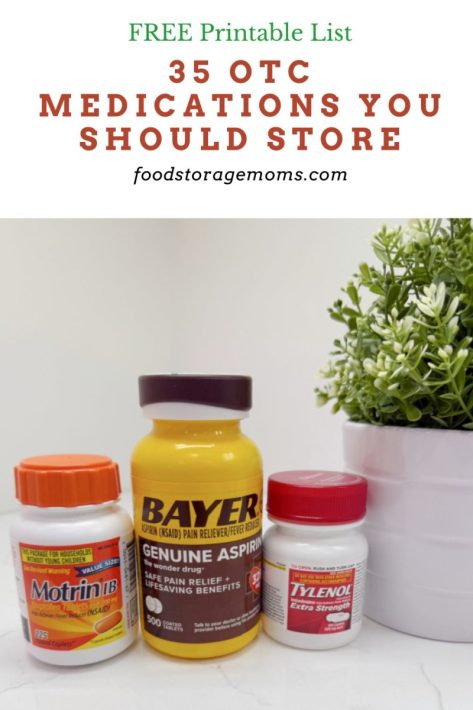
Just consider a traumatic event that cuts you off from going to the local pharmacy, a retail store with OTC medications, the doctor, the dentist, or even making a trip to the massage or physical therapist for much-needed treatment.
That could mean no prescriptions, no (much-needed) root canal, and tense, achy muscles. Talk about a world of discomfort and pain! Stockpiling several over-the-counter medications before a crisis occurs seems to make pretty good sense to me.
Here’s a look at 35 OTC medications you should consider storing that could help fight pain, nausea, earache, and more. Please keep in mind that I’m not skilled in the medical field. I highly recommend you consult with your medical professional about any drug interactions you may experience if you start using any of these medications.
Please remember that I am not a doctor, nurse, or anyone in the medical field. Please consult with your medical professional to make sure your OTC medications are compatible with your prescriptions and any health issues you may have.
FREE OTC Printable by Food Storage Moms
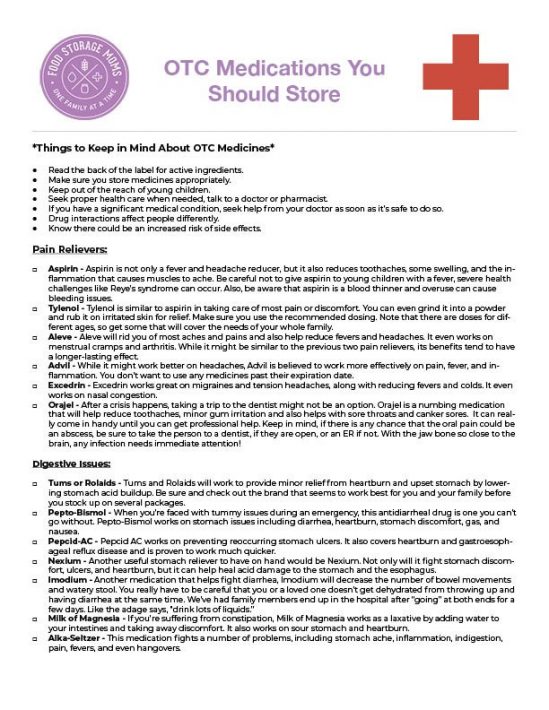
35 OTC Medications You Should Store
Top List of OTC Medicines You Should Store:
Pain Relievers
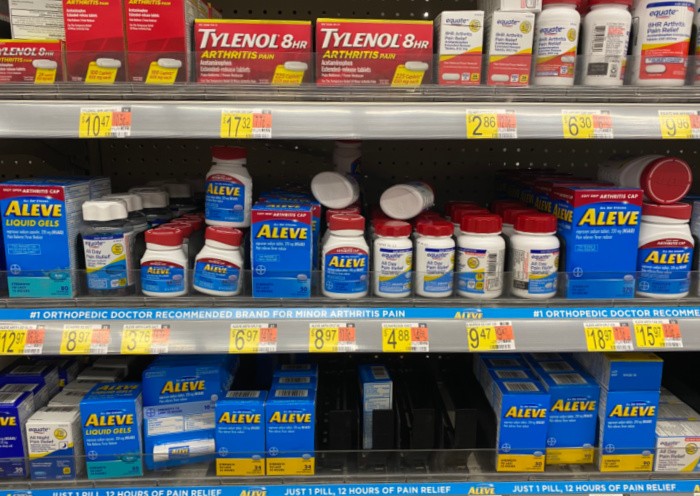
1. Aspirin
Aspirin is not only a fever and headache reducer but also reduces toothache pain, some swelling, and the inflammation that causes muscles to ache. Be careful not to give aspirin to young children with a fever; severe health challenges like Reye’s syndrome can occur. Also, be aware that aspirin is a blood thinner, and overuse can cause bleeding issues.
2. Tylenol
Tylenol is similar to aspirin in that it can relieve most pain or discomfort. You can even grind it into a powder and rub it on irritated skin for relief. Make sure you use the recommended dosages. Note that there are doses for different ages, so get some that will cover the needs of your whole family, including children.
3. Aleve
Aleve will relieve most aches and pains and help reduce fevers and headaches. It even works on menstrual cramps and arthritis. While it might be similar to the previous two pain relievers, its benefits tend to have a longer-lasting effect.
4. Advil
While it might work better on headaches, Advil is believed to work more effectively on pain, fever, and inflammation. You don’t want to use any medicines past their expiration date.
5. Excedrin
Excedrin works great on migraines, tension headaches, and reduces fevers and colds. It even works on nasal congestion.
6. Orajel
After a crisis, taking a dental trip might not be an option. Orajel is a numbing medication that will help reduce toothache pain and minor gum irritation. It also helps with sore throats and canker sores. It can come in handy until you can get professional help.
Keep in mind that if there is any chance that the oral pain could be an abscess, be sure to take the person to a dentist if they are open or an ER if not. With the jawbone so close to the brain, any infection in that body area needs immediate attention!
Digestive Issues
7. Tums or Rolaids
Tums and Rolaids will work to provide minor relief from heartburn and upset stomach by lowering stomach acid buildup. Be sure to test out various brands to determine which seems to work best for you and your family before you stock up on several packages.
8. Pepto-Bismol
When you’re faced with tummy issues during an emergency, this antidiarrheal drug is one you can’t go without. Pepto-Bismol works on stomach issues, including diarrhea, heartburn, stomach discomfort, gas, and nausea.
9. Pepcid AC
Pepcid AC works to prevent recurring stomach ulcers. It also covers heartburn and helps relieve gastroesophageal reflux disease. It is proven to work much more quickly than other similar meds.
10. Nexium
Another valuable stomach reliever to have on hand would be Nexium. Not only will it fight stomach discomfort, ulcers, and heartburn, but it may also help heal acid damage to the stomach and the esophagus.
11. Imodium
Another medication that helps fight diarrhea, Imodium, will decrease the number of bowel movements and watery stool. You have to be careful that you or a loved one doesn’t get dehydrated from throwing up and having diarrhea at the same time.
We’ve had family members end up in the hospital after “going” at both ends for a few days. Like the adage says, “drink lots of liquids.”
12. Milk of Magnesia
If you’re suffering from constipation, Milk of Magnesia is a laxative that adds water to your intestines and relieves discomfort. It also works on sour stomachs and heartburn.
13. Alka-Seltzer
The last stomach aid we discuss is not least on our list, Alka-Seltzer. This medication fights several problems, including stomach aches, inflammation, indigestion, pain, fevers, and even hangovers. This is the one my husband uses most often.
Mark swears by Alka Seltzer. His stomach can’t take raw onions or garlic, so he does the “plop, plop, fizz, fizz” Alka Seltzer treatment if he has issues.
Cold and Flu
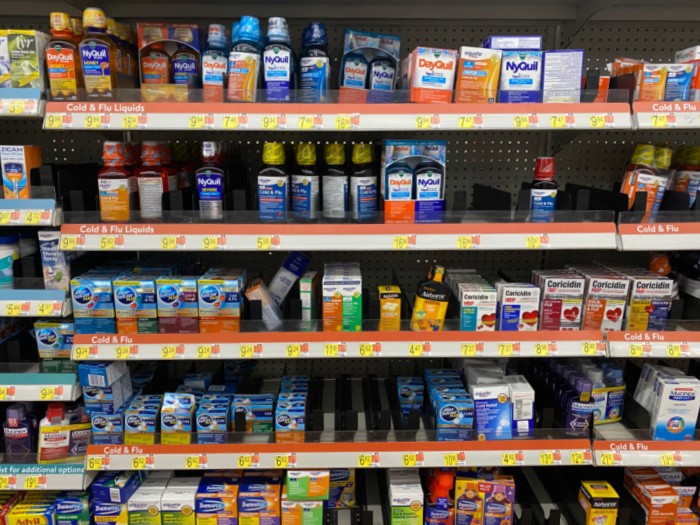
14. Dayquil
Catching a cold or fever during or after a crisis without anything to fight it can be a real problem. Dayquil fights several symptoms, including cough, stuffy nose, fever, flu-like symptoms, body aches, and headaches.
15. Mucinex DM
If you’re having a rough time sleeping from all the coughing and mucus build-up in your throat, Mucinex DM could become the remedy you’re looking for.
16. Robitussin
Robitussin helps relieve constant coughing by reducing chest congestion. For diabetics, it sounds like there may be a diabetic version available. The brand called Halls has sugar-free lozenges that could provide some relief.
17. Sudafed or Sudafed PE
Sudafed PE provides short-term relief for nasal congestion while providing pain-relieving benefits. It helps with the common cold and respiratory allergies.
You can get Sudafed behind the pharmacy counter by showing your driver’s license. They will also ask you for your phone number here in Utah. I believe you can get four packages per year per driver’s license here in Utah. Be sure to check this out in your location so you won’t be surprised at the store.
18. Nyquil
Nyquil works similarly to Dayquil by fighting the same symptoms, yet it causes drowsiness and helps you sleep at night. Be cautious with any medications that indicate they can help with sleep. You shouldn’t drive or run machines and equipment while using this medication.
Allergies
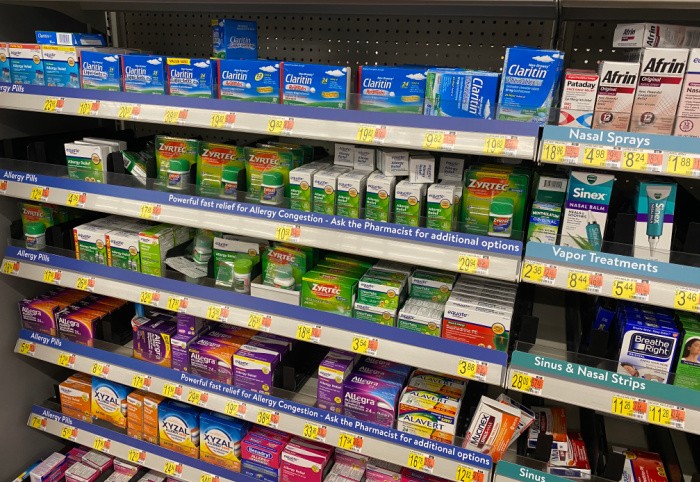
19. Zyrtec
Are you struggling with sneezing, a runny nose, or itchy and watery eyes? Zyrtec is an antihistamine that will work on all of those for much-needed relief. It’s also great for reducing rashes, like hives.
20. Claritin
Claritin is another allergy relief medication that works similarly to Zyrtec. The patient must decide which one works better.
21. Benadryl
Benadryl fights symptoms such as rashes, sneezing, a runny nose, and itchy and watery eyes. It can also be taken to prevent vomiting, nausea, and dizziness. Benadryl is critical to have on hand for emergencies. Mark takes 1/2 a pill each morning to eliminate the urge to scratch patches on his stomach. Some people indicate it can cause drowsiness.
22. Allegra
Allegra is another antihistamine that works in most minor allergy cases.
Skin Irritation/Wounds/Bandages
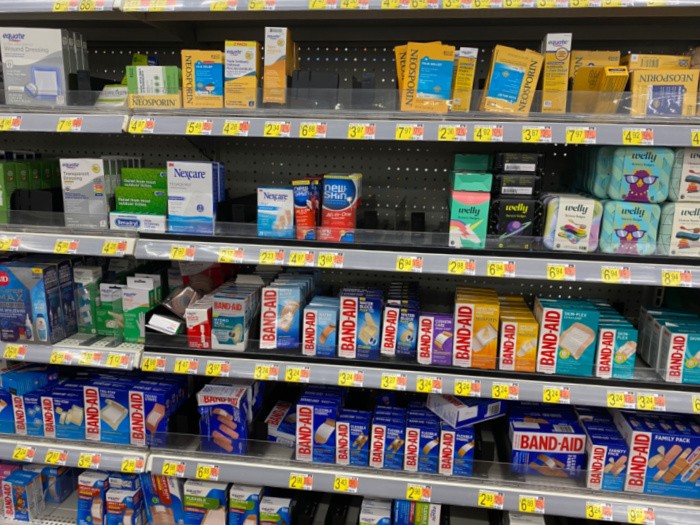
23. Aspercreme
Aspercreme will help treat minor aches and pains in your muscles and joints.
24. Lotrimin
If you are suffering from a yeast infection, ringworm, jock itch, or athlete’s foot, Lotrimin may provide the relief you’re looking for.
25. Cortisone 10
Cortisone 10 works great on bug bites, poison ivy, allergies, rash, and even eczema, by reducing the swelling, redness, and itching that may occur.
26. Neosporin, Bacitracin, or Polysporin
Everyone should have this medication in their medical inventory to prepare for an emergency. If you’re suffering from a minor burn, wound, or cut, Neosporin will help keep bacteria from causing infections. It is suggested that you steer clear of Neosporin for long-term use and try one of the other two based on its contents.
Misc. Medications
27. Charcoal Tablets
Charcoal tablets help filter out undigested toxins and poisons that might have been eaten.
28. Melatonin
Anxiety, stress, and insomnia more than likely will keep you awake after a devastating crisis. A stockpile of melatonin, or other sleeping aids, can help you get the rest you desperately need and help you make better decisions.
29. Potassium Iodide Tablets
If there were ever a radiation emergency, potassium iodide tablets could help the thyroid gland from taking on excessive radioactive iodine.
30. Electrolytes
During a crisis, you want to ensure your body gets all the electrolytes needed to function correctly. Electrolyte Powder. This also ties into the discussion earlier about dehydration. Some of your body functions can shut down if you’ve lost many electrolytes.
31. Dramamine
Dramamine will provide relief from nausea, vomiting, or motion sickness.
32. QuikClot/BleedStop
You never know when you’re going to need something to stop significant bleeding. QuikClot might save your life or reduce the bleeding until you get professional medical help. QuikClot. If there is any way to get the person affected by the puncture or severe cut to the hospital or clinic after you’ve administered the necessary first aid treatments, do it. BleedSpot
33. Multivitamins
Although technically not an over-the-counter medication, multivitamins will ensure your body gets the nutrients and minerals needed. You’re probably not eating the most nutritious food during and after the emergency. As we age, we must consider supplementing our bodies’ nutrients with various vitamins and minerals. Ask your doctor for advice regarding the most critical ones to take.
I recently wrote a post about vitamin D3 that you should check out. Vitamin D Benefits
34. Epsom Salt
Epsom Salt is another useful item to have. It reduces stress and relaxes the body. It sounds like the perfect solution to put in your next bath water after a crisis. Many of my readers soak their feet in Epsom Salt to find relief for very sore feet.
35. Rubbing Alcohol
I remember using it to clean pierced ears, disinfect dishrags and sponges, and sanitize my hands. I am trying to get a 91% solution.
Some Other Items to Consider:
36. Hydrogen Peroxide
It can be used to disinfect toothbrushes and mouthguards, as well as nail or pedicure tools.
37. Diaper Rash
We must stock some diaper rash cream. We may not need it personally, but someone in an emergency shelter we share may have a need. Diaper Rash Cream
38. Voltaren
This is good for arthritis, according to a reader. Here is more information on it. What is Voltaren
39. DenTek Temparin Lost Filling Repair
This is a TEMPORARY fix until you can see a dentist. DenTekTemparin
40. Calamine Lotion/Zanfel
This works great for so many skin rashes. Calamine Lotion or Zanfel (Poison Ivy, Oak & Sumac Wash)
Things to Keep in Mind About OTC Medicines
- Read the back of the label for active ingredients.
- Make sure you store medicines appropriately.
- Keep out of the reach of young children.
- Seek proper health care when needed, and talk to a doctor or pharmacist if you have questions or concerns.
- If you have a significant medical condition, seek help from your doctor as soon as possible.
- Drug interactions affect people differently.
- Know that there could be an increased risk of side effects.
Stock Your Home Pharmacy
- Electrolyte Drip Drop
- LMNT Sugar-Free Electrolyte Powder
- Cough Lozenges
- Imodium
- Aspirin
- Tylenol
- Ibuprofen
- Vicks VapoRub
- Bag Balm
- Dr. Bronner’s Soap
- Hand Sanitizer
- Tooth Brushes and Toothpaste
- Orajel
- Benadryl
- Advil
- First Aid Supplies
- Survival Medical Handbook
- Non-latex Gloves
- Antibacterial Bar Soap
- Bars of Soap
- Emergen-C
- Lip Balm
- Nasal Spray
- Vitamins
- Essential Oils
- Allergy Medications
- Infant Fever Reducer Medications
- Child Fever Reducer Medications
- Zanfel (Poison Ivy, Oak & Sumac Wash)
OTC Printable by Food Storage Moms
Final Word
There are many over-the-counter medications you’ll want to have stored away in case of an emergency. Just be aware to rotate your supplies to keep your medical stock from going out of date.
If you can think of any other medications that provide relief during various types of emergencies, tell us about them. These are my favorite 35 OTC medications; you should store them if you use them. Note that I added a few more essential items. May God bless this world, Linda

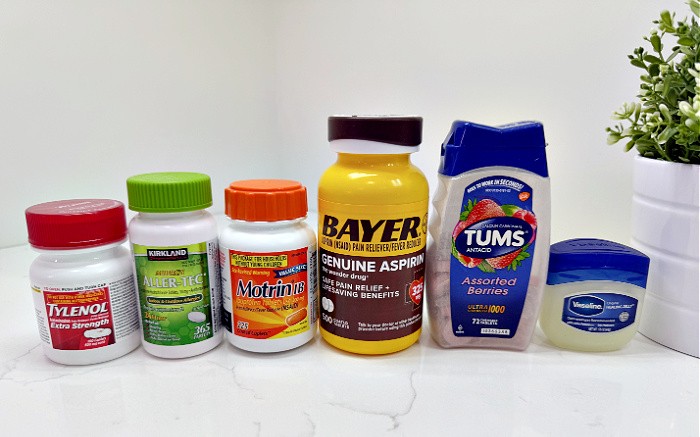

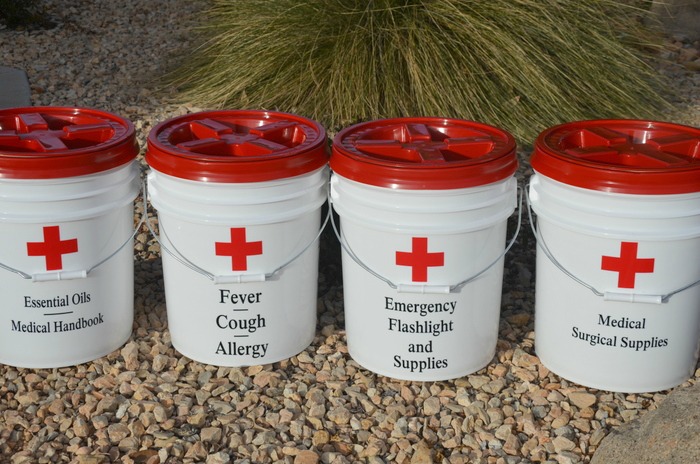
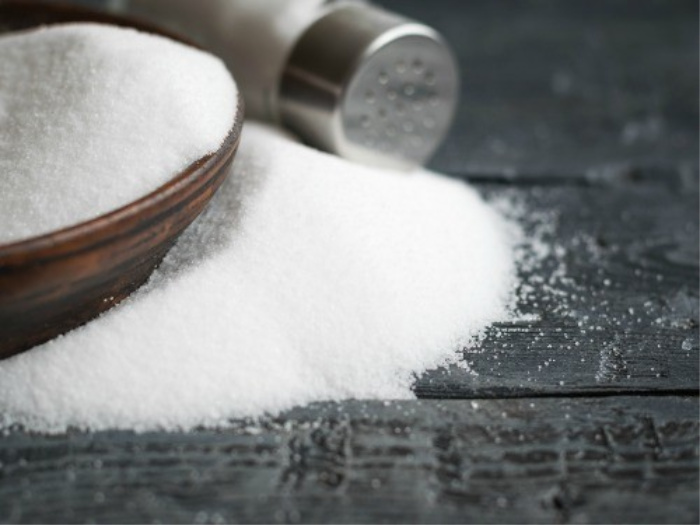
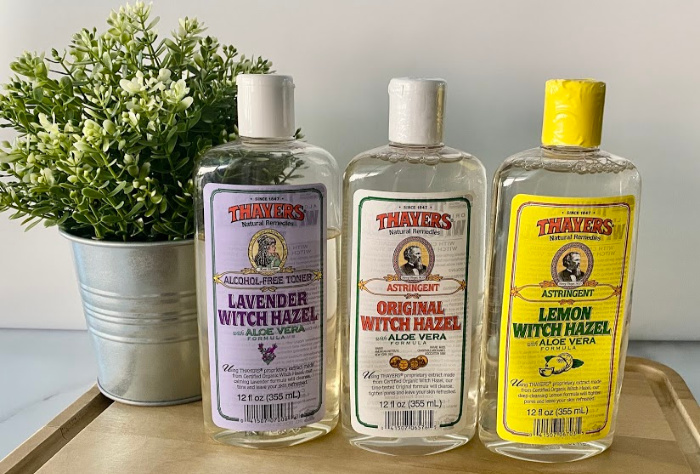
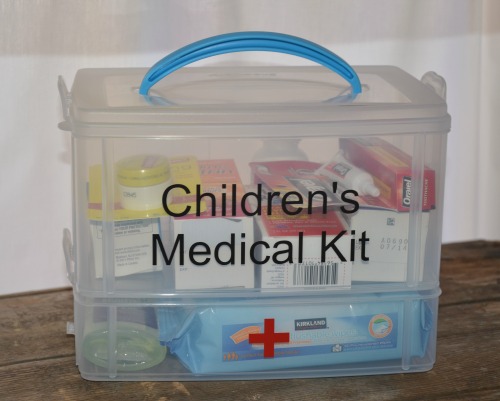


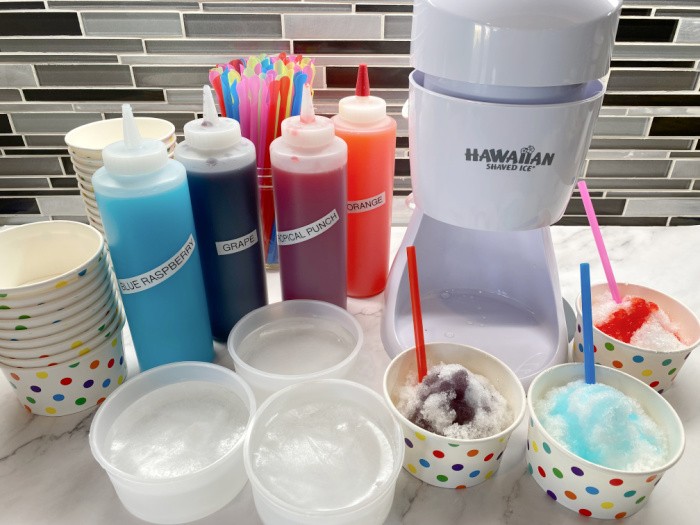

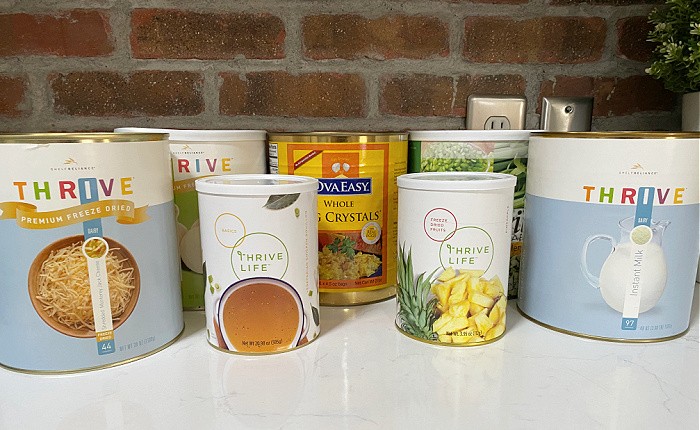


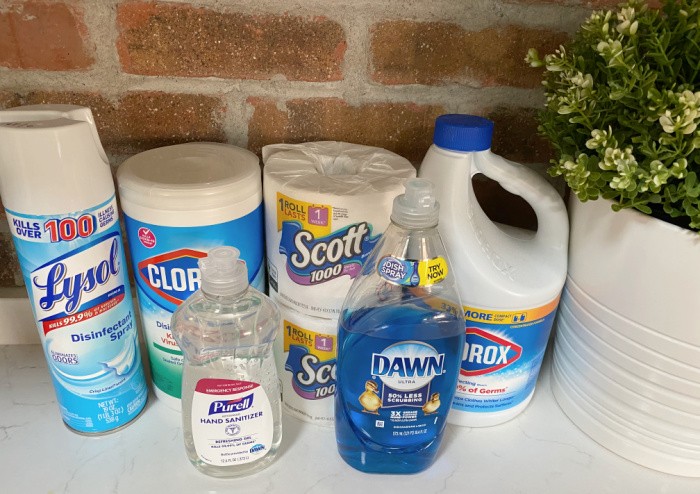
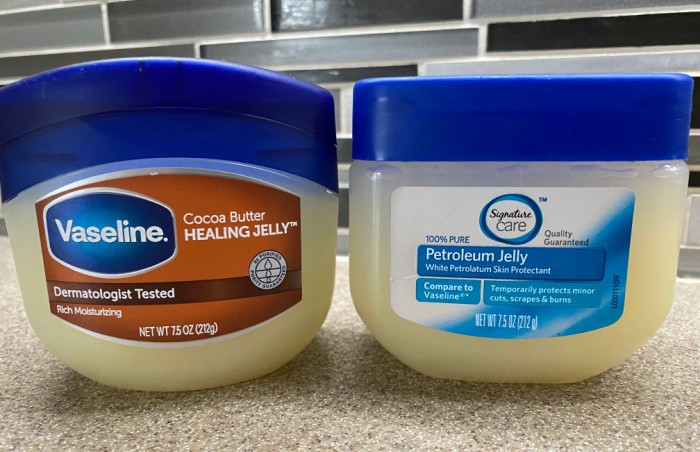

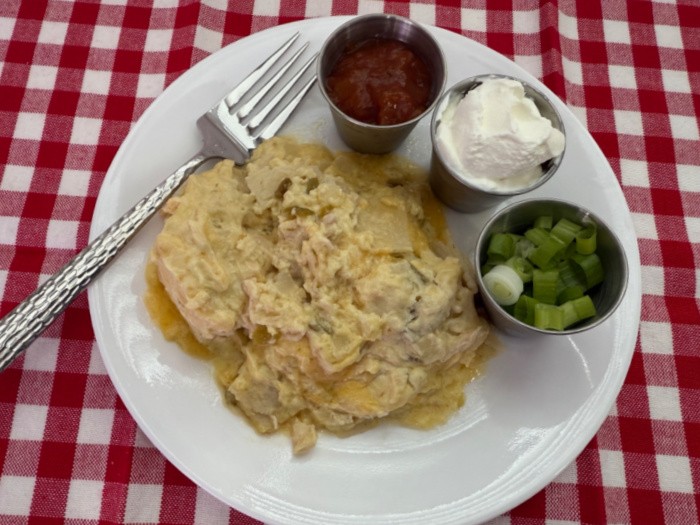
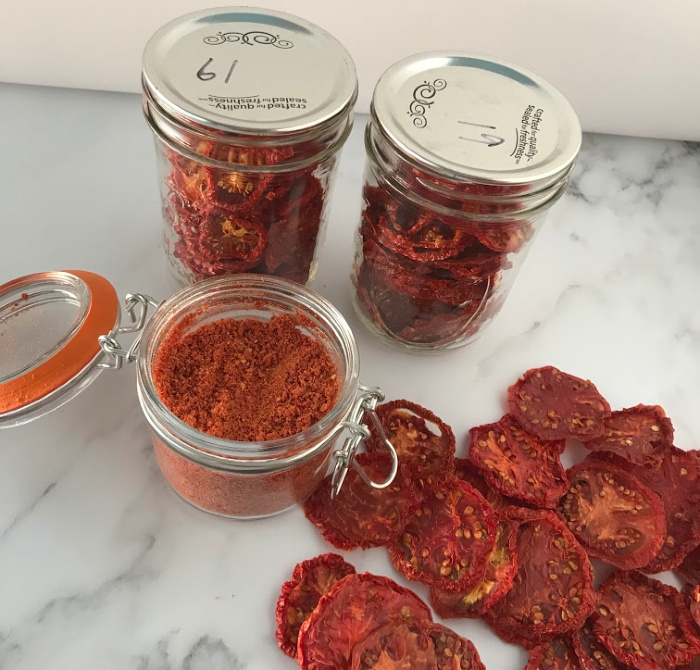
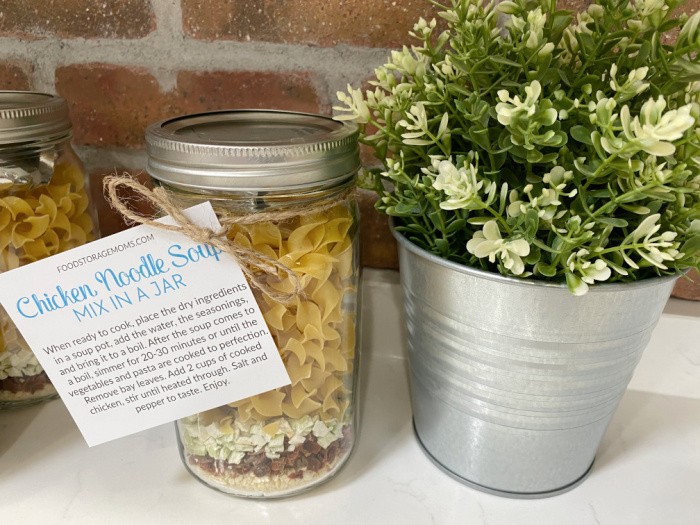
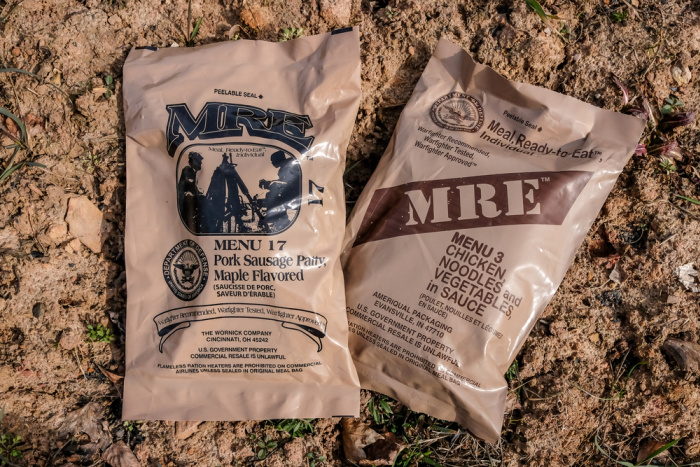

For antacids I rely on Rolaids, for some reason the other brands all make me nauseous. So make sure you try whatever brands of antacids you’re planning on storing before going in whole hog…
Zyrtec is great for allergies like hay fever, but it’s also useful in reducing rashes like hives. For folks who get hives when stressed, it’s a decent option when used in conjunction with hydrocortisone cream.
And I wanted to share an experience with expired Orajel. The liquid numbing agent had separated from the gel so it poured out of the dispenser very fast and was just as effective, if not more so….So if you have old Orajel you might want to open it carefully over a tiny measuring spoon in case your supply has started to separate. That way you can still dispense it on the ache without wasting it or over applying it (like I did…)
Thanks for all the wonderful articles!
Hi DMWalsh, thanks for the comments. I’m going to add your tips to the post. Real-life stories help us all. These are awesome! Linda
HI LInda,
Just a few comments. Real Sudafed works much better than Sudafed PE. Real Sudafed is still an OTC drug, but it’s kept behind the pharmacy counter due to its abuse in making meth. You have to show a driver’s license and sign for it, and you’re limited to how many you can get each month.
Get pill forms of medications whenever possible. The shelf life of pills is much greater than for liquids.
Potassium iodide is only effective for one kind of radiation, radioactive iodine. It does nothing against cesium or strontium. And if you’re an older person, you may not need it at all. It’s only for preventing thyroid cancer which can take up to a decade to develop in older people.
This is a great list you have put together. I would definitely add caffeine pills to the list. They’re sold as No-Doze, Vivarin, and Jet Alert. They’re inexpensive and have numerous uses. I have written about the use of caffeine, Benadryl, and most all the other medications you have listed on my blog PrepSchoolDaily dot blogspot dot com.
Have a great day!
Hi Jennifer, great comment, thank you. I just added the kind of Sudafed you mentioned. That’s the only one I buy from behind the pharmacy counter. Great reminder. Thank you so much, Linda
There is also a treatment for cesium radiation exposure called Prussian Blue. It’s only available by prescription and a bit pricey. The kind Jennifer mentioned is available OTC. One would have to know what type of radiation they’ve been exposed to. That’s definitely not something I would know how to tell. If that type of medication is going to be needed, I’m going to pray that I’ve led my life righteously and have my affairs in order!
Nu-skin or a similar product. It’s to cover abrasions or closed cuts with a protective film (more like water-soluble varnish) to keep out dirt and germs. Burns like crazy on something like a juicy abrasion, but by the time it stops the wound is protected and stable. And it will stay that way until you wash with soap & water.
Hi David, thank you for the reminder about Nu-skin. Great tip! Linda
If you clean your wound good enough and it’s not huge, Super Glue works real good. In a pinch, it’s better than nothing!
Clear nail polish is also a very good cover for minor cuts (paper cuts in particular). My mother worked in an apple packing shed and the cardboard boxes and the paper used at the time for wrapping apples caused her fingers to split and she got paper cuts galore! She washed and dried her hands then covered the splits and paper cuts with clear nail polish. It is a bit painful at first but it kept dust/dirt and other undesirable stuff out of those cuts. It wore off after a couple days and the cuts healed very well.
HI Leanne, oh my gosh, I have never heard about this! I love it! Linda
When using this product, use a Q Tip instead of the tiny brush. This will avoid contaminating the rest of the contents.
As of October 1, they are pulling Zantac off the shelf because it causes cancer, When I asked my doctor what kind of cancer she said she did not know.
Hi Linda, thank you, that’s why I wrote what I did on my post. This is crazy all these people have been taking this poisonous FDA approved medication and now it’s being taken off the market. It’s so scary! Linda
The additive the found in Zantac is apparently able to cause multiple forms of cancer. It stays in the body, and doesn’t get excreted, as far as I can find. Nexium is a better but expensive option. Arrrgh! I believe the chemical was also found in generic Zantac.
Hi MaryAnn, I wondered why they took Zantac off the market. Interesting since it was approved by the FDA, it makes you wonder what changed. LInda
Something an ingredient, or a change in the manufacturing processes, so that it appeared after FDA approval. But it’s in all forms of Zantac and it’s generic Ranitidine. That’s affected the 3 primary name manufacturers, and all of the subcontracted generic manufacturers world wide. The class action law suits are just now coming through the courts, finally. I took Zantac when it first came out for over 6 months. So far so good. I recently discovered an article at the Web MD website on a new wave of contamination across many drugs now on the market. They aren’t completely sure yet how it’s spreading so fast over multiple companies and such a variety. But they are madly trying to figure it out. Some of the medications can’t even be recalled and taken off the market. They are the only medication to help many people manage their illness. Have you heard about the latest contamination issue. Baby foods contaminated with high levels of heavy metals. It causes brain damage to baby’’s and toddlers. The result is ADHD and Autism. Must be why both disease processes have been increasing so rapidly. The frightening thing , is that Gerber and Beechnut are in the top numbers, a smaller natural food brand and Walmarts store brand up there too. Walmart probably has a contract with Gerber or Beechnut to manufacture their house brand! Time to go back to making baby food for our children. That might be a good article to write up. Afterall, Preppers will find it necessary in a future crisis, and even now with recalls and empty shelves, due to shortages, makes it a nearly lost skill that people should really learn.
Hi MaryAnn, I have heard about the Zantac issues. Interestingly that you would mention the contamination of drugs. I had not heard that, thank you! Yes, I have heard about the heavy metals and other issues with baby foods. I made all of my kid’s baby foods. I had a small hand grinder and what we ate they ate. I had to be careful with making my baby food based on the age of my kids, of course, but it worked. Plus, it saved us a lot of money. I also used cloth diapers, that’s all we had when my girls were born. I didn’t think anything of it at the time. I would do it again today if it saved me money. It’s interesting, a couple of days ago my husband and I went for our yearly wellness checkups. I have a lot of pain from arthritis, and I use Ibuprofen. When I see prescription drug commercials on TV, I’m shocked to see all the side effects. What’s worse, when a drug is approved by the FDA then a couple of years later, they are recalled. WAIT, why? Anyway, my doctor suggested a certain prescription. He sent the prescription to Costco and then I read the adverse reactions. I canceled the order. I’m going to try a natural way of helping the pain. I need to lose weight and eat more veggies and fruits. Less meat. Or no meat! The prices are ridiculous! I’m so thankful you mentioned about the shortages in Florida. I’m writing an article about the food shortages again. People need to be aware of how bad it is and will not be getting better as far as I can tell. Thanks again, Linda
I think you might want to add another type of Robistussin to the list and that is their medication for diabetics called Diabeti-Tussin.
Some medications like throat lozenges have sugar in them, but Halls offer sugar free versions and to alleviate dryness, they sell their Refresh Advanced Moisture Action which are like lozenges or hard candy. You suck them and they sort of squirt inside your mouth. Sugar free or not, they’re nice to have and not medicinal, so they’re safe for anyone.
And while not medication, but a comfort item, they sell a few sugar free candies at Dollar Tree, but the best place to find a wide variety is (No not Walmart)…. but Walgreens. They seem to stock more than most stores.
One more thing I like to have is Afrin Nasal Spray (Or similar) to relieve my stuffy nose at night. You spray it, it drips, you blow your nose and then you can breathe and get right back to sleep.
Hi Frank, thanks for the reminder on Diabetics, adding these right now. That’s a great tip on Walgreens!! Thank you! Linda
Thank you for your comments. I have GERD pretty bad since my surgery one of the foods they I should not eat is any surgary items.
Hi Linda, thank you for that comment!! I’m sorry to hear you got Gerd from the surgery, that’s not fun! Linda
I learned a lot from your list and commentary, thank you Linda.
We keep less than 5 of the items mentioned on this list, on hand. Over the years I have searched for and used natural remedies, keeping those on hand instead. For me this choice has also eliminated side effects. But I am a family herbalist so that training helps a lot.
Hi Janet, I use My Doctor Suggests Structured Silver more than anything. The list is mainly to help people think about everything they use each day, once a week, or monthly. Or maybe even yearly. My goal is to teach people to be prepared before they have to be. I really admire you for being a family herbalist. That is so awesome. We need to be able to take care of ourselves and teach people not to rely on modern medicine if it’s not available. It would be so nice if everyone could bring something to the table in the neighborhood. We will all need different skills. I love natural remedies too. I rarely go to the doctor, I never get sick. Your neighborhood is lucky, Janet! Linda
Linda ~
I had surgery over 3 years ago and had never experienced GERD before that! I have been taking Omeprozole consistently and it barely kept it in check. Now before bed (I am rarely if ever, affected during the daytime) I take 1/4 teaspoon of good ol’ baking soda in a glass of water and a little squirt of lemonade drops for flavoring. I haven’t had any GERD since then (have been taking this for over a week now).
Thanks for the tip Leanne! Linda
Thanks for the tip!!
Hi Lisa, glad she could help! Linda
I’d also suggest that everyone at least read up on home remedies–including old-fashioned herbal ones.
The only pain reliever I’ve used in years is willow bark (I put the cut-up bark in a jar with vodka and let it sit for a month or so, then strain and put in brown bottles). Seems to take perhaps a little longer to take effect than aspirin, but works and lasts better, with none of the NSAID side-effects.
For indigestion, meadowsweet flowers made into a glycerite (soaked in vegetable glycerine). My husband had had bad reflux apparently for several years–pill-pushing doctor had put him on omeprazole for those several years, which damaged his memory (and I know from vet medicine that horses shouldn’t be on omeprazole for more than a few weeks!) Meadowsweet made the difference.
These are only a few… All kinds of good medicine probably grows in your back yard: plantain, yarrow, mullein… And that’s just the weeds, never mind what can be intentionally grown!
The OTC remedies are certainly worth having on hand, but can cause other problems and will eventually run out. Be aware of the old-time ones, too.
Hi Rhonda, great comment. It’s to bad the doctor pushed those drugs on your sweet husband. Years ago we followed the doctor’s suggestions. Not so much anymore. We have to be our own advocates for our health. I really appreciate your comments on the old-fashioned herbal remedies. When I was little I bet I went to the doctor once in ten years. AND I had measles, chickenpox and who knows what else. It’s funny Rhonda, or maybe it really isn’t. My daughters and I have high cholesterol. I have been taking statins for 30 years (not good). My daughters have learned to fight it naturally and with diet. Imagine that?? LOL! I hope to be off my cholesterol medicine within 6 months based on their ideas. Yes, this old dog can change. LOL! Linda
Linda, try Red Yeast Rice tablets from Costco. They’re giant horsepills but maybe they can be broken in half. My husband doesn’t want to take statins due to muscle cramps so he started the Red Yeast Rice. His cholesterol is amazingly low now. The doctor never complains about his levels anymore!
Hello, Robbie: Just so you and others know, you can buy Red Yeast Rice pills from other outlets besides Costco, and they are not horse sized pills, either. I get mine from Vitacost.com and I’m sure you could find them on iHerb, Amazon, and many other “stores”. Our doc is very MUCH against Statins, as they trash the Cholesterol you actually NEED for proper hormones in your body and in your brain! My girlfriend graduated at a very mature age as an LPN. She went to work for a well-respected local doctor. He put her on Statins, and she lost her memory completely. She had to go into Adult Care round the clock, AND now she is in a nursing home and only remembers that she loves chocolate ice cream. AND NO, this was not from Alzheimer’s, either. It was the statins! Red Yeast Rice has worked well for me, at least. By the way, the newest levels for Cholesterol are stating below 200, which can be very dangerous! Not that long ago, 200 was considered to be “optimal” and 220 was still considered good. No kidding! A LOT also depends on what type of cholesterol you are dealing with and what size of the particle. One is much less dangerous than the other, but it will depend if your doc and your insurance will even USE the proper testing to know what’s going on!
Joyce E. Stotts
Newark, NY
Certified Natural Health Professional since 2006
HI Jess, I have been on statins for 50+years, interesting. My biological father died from a heart attack at a very young age. I know two of my girls have high cholesterol and will not take statins. The other two have never been tested. It’s hard to know what to believe from a few doctors nowadays. Linda
Rhonda ~
Thank you for the information on meadowsweet. I will look into getting some and trying it. I really want to get off the omeprozole! The baking soda works pretty well but that is so high in sodium. So, I will research the herb and give it a try!
One of the things that I did a few years ago was take a couple of on-line herbal classes thinking (and rightly so) that in retirement, I might not have the money to spend on conventional drugs if needed. I am NOT an herbalist in any form but I think that I have enough herbal knowledge to at least research herbal remedies and try them on myself!
Leanne, the meadowsweet glycerite even tastes good! DH actually only needs to take it very occasionally now. We also had a friend have bad acid tummy while he was visiting–didn’t have any antacid to give him, so I offered the meadowsweet–he was thrilled with how it worked!
From what I’ve read, the omeprozole actually may perpetuate the reflux–it lowers the acid, so digestion isn’t as good, and the stomach contents actually may begin to ferment, causing it to bubble up into the esophagus. Plus food isn’t as completely digested.
Thank you Rhonda,Linda
Rhonda, I also have been trying to read as much as I can about herbal remedies, essential oils for our medical needs. My husband has stomach problems and they prescribed Zantac. They are recalling the Zantac right now, so trying to get him to try other things. We have an essential oil that we use for some tummy problems, but I am going to research the Meadowsweet that you recommend.
I’m not an herbalist, but do believe in home grown remedies. I keep a bunch of homeopathic herbal teas on hand, turmeric spice for joints, ground ginger & mint for tummy, and a bunch of Vicks or generic brands for colds, but I’ve heard dry mustard plasters are what they used to use instead. I’ve also heard cayenne pepper is good for stopping bleeding even when just sprinkled on a cut. Although my mom drank some in a tall glass of water when hemorrhaging after giving birth to my brother at home and quit bleeding out, my sister freaked out when I suggested taking it to another family member. Wonder if you could find any more research on the usefulness of cayenne pepper? Thanks for all you do!
Hi Estina, I remember my mom putting a mustard plaster on my dad’s chest because he had pneumonia (I’m guessing all these years later). I wrote a post on making nuts with Cayenne pepper. It’s so good. I talked a little about the health benefits. I will work on another post very soon. I stock Cayenne pepper for health issues. https://www.foodstoragemoms.com/quick-easy-healthy-spicy-nuts-recipe/ That’s a great story about your mom surviving the hemorrhaging after giving birth. I truly believe we will be going back to the surviving just like our parents and grandparents did. And it will be without BIG PHARMA. Great comment. Linda
According to the traditions of the Middle East, pregnant mothers are told to eat 5-6 dates each day for the last 6 weeks of gestation, in order to prevent dangerous bleeding and excess pain in childbirth. I told this to the pregnant daughter or my first cousin, and she still swears that the dates saved her life! She had a deadly “dis-ease” during childbirth, one that affects the quality of your blood, while you are bleeding out. They barely saved her, and she was only about 33 at the time, I believe. All I know is that it is REGULARLY ‘prescribed” to follow this regime when pregnant in the Middle East! Supposed to reduce the pain in childbirth, as well, because it prepares the womb for and easier delivery.
Hi Jess, interesting about the dates. I have granddaughters having babies now, when I was young, I was so naive. Linda
here are some things to consider candied ginger-stomach irregularities, red pepper-stops bleeding (type 2 diabetic some times bleed when getting injections stops right away ) , apple cider vinager – upset stomach , gurr, oil of oregano capsuls – colds, flu,eldiberry syrup-colds and cough,tiger balm-joint pain,bag balm melted with oil of oregano,collodial silver,myrr (apply to cuts ,ccover heals within three days better than ungenteen
Hi Bill, oh my gosh, thank you so much for this list!! I never thought to melt Bag Balm. I LOVE LOVE LOVE this comment! Thank you so much! Linda
Bill, I think you must be a GENIUS! WE use several of your suggestions on a regular basis with great success! The only thing I will mention is that if you can get a container of Young Living’s animal scents ointment, you will be very blessed. It already contains a BUNCH of organic essential oils in it, and was developed by Gary Young when his prize stallion was bitten by a snake, I believe. The horse’s hoof was about to fall off due to the poisoning, but he made up the Animal Scents Ointment and used some essential oils besides and saved his favorite horse’s life! I once gave my elderly uncle (with diabetes) a jar of the animal scents and some oils for antiseptic purposes. He had an open wound on the side of his abdomen that had been there for years. He showed his doctors the animal scents jar when it healed that wound completely, and the doc said “Great”! I’m glad the horse ointment healed you!” Well, it is much more than just for horses. Great on scrapes, too. We also ocassionally use it if the exit hole gets sore after too many wipings. Works great and soothes the soreness right away!
Hi Jess, yyou always have some great new ideas, I love it. Linda
Zantac is being recalled, so probably might find a different antacid to take like Pepcid. Love all the other ideas. Definitely printing a list of all the great ideas.
Hi Carla, it’s crazy the FDA approves it and now it’s being recalled. I guess the research wasn’t that good the first time. Heaven help those who have been taking it. Linda
Hello! Just came across this article–good one! I would like to add to your list of OTC meds: Salon Pas has fairly recently put out a new adhesive pain patch that contains 4% lidocaine, only 1% less than prescription only Lidoderm patches and far cheaper! The patches can be worn for up to 12 hours and, of course, don’t contain any narcotics. And it doesn’t smell like BenGay as do their other patches.
Hi Katherine, thank you, Linda
Zantac has been removed from the market I love your list but I think it may need an update.
Hi Marcia, the way the FDA works I will have to update continually. Thank you, Linda
Would included items for sprained ankles and such. there are instant ice packs and gauze. Also things for cuts. Like band aids, those butterfly things. First aid book. Rags. Lots of rags
hydrogen perioxide
Hi Donna, thanks for your comment. I have several lists, this is just one of many. Great comment, Linda
You can also go to Amazon and buy the annual (updated) Nurse’s Drug Handbook, to see what side effects come with your prescription meds. and to see what NOT to take at the same time because of deleterious side effects if you do. Great reference book! I ALSO recommend any books you can get your hands on by Clell Fowles, a pharmacist who knows which drugs cause which nutritional deficiencies. I don’t know if he ever finished the updated version…I only have the older ones, but they were AWESOME!!
Hi Jess, I am going to look for that book, thank you! Linda
I love you blog and really appreciate all the work you put into it. IBecause of your blog I was fully prepared for this pandemic and all the groceries gone from the stores. You and me think alike about being prepared. Thank you again
Linda, is there a way to print out this list along with your explanations in a condensed format? THanks so very much for your diligent, caring work.
Hi Glenda, yes, let me know if you see the green “PRINT” button. It prints ONLY the post with ZERO ads. I just emailed it to you. Let me know if it worked, I have never emailed one to a reader. Some of my readers PRINT every post and file them so in case we lose power, they can read them. Stay well, Linda
I know this is an older post, I just wanted to mention that Neosporin should no longer be the go to when treating minor skin wounds or irritation. Neosporin has been know to cause allergic reactions and super bugs. Doctors recommend that you treat with single ingredient medications like Bacitracin.
Hi Lesley, wow, thanks for letting me know. I had not heard this, Linda
Hi Lesley, thank you, I just added Polysporin and Bacitracin. Thank you, Linda
THANKS for letting us all know that, Lesley! I am going to buy some Bacitracin right away…
JESS
Hi Linda, excellent list, but add children’s and infants medicine doses and bottled water. Also alcohol free cough syrups. Be cautious with sugar free candy, especially with children. Mannitol and other sweeteners used don’t disrupt blood sugar because they are excreted through the bowels, and too much results in major diarrhea. But have regular candy on hand for treats after un tasty medicine, and diabetic insulin reactions. Insulin levels are affected by not just diet (and diets get disrupted during disasters,) but unusual exercise and bio thermic stress ( keep them warm in cold/cool in heat). Also emotional stress, can affect their levels, along with injuries, illness, potential dehydration and sleep disruption. Plenty of fresh blood testing supplies, insulin (hopefully the modern shelf stable variety. If not, a method of refrigeration for it. Sanitary gloves, alcohol prep swabs.
Hi MaryAnn, oh my gosh, thank you so much for your tips!! You will be such an asset where you live if a disaster hits. We need all of this information NOW before an unforeseen emergency occurs. Great stuff, Linda
Hi Linda, more to add. First let me say I’m retired from nursing, with first aid, EMT, CPR Trainer, Herbal Interests, and older medical technology background. Not everything I mention is an OTC med but it’s all related. Now I have GERD and IBS and have been on everything there is for both. But currently I take Famotidine 20 mg and it works outstandingly. Best solution I’ve ever had and no problems. It’s available OTC as Pepcid AC by trade name and generic equivalent brands at 10 mg, that dose works for many people, but 2 tabs gives the full prescription strength. Currently the prescription strength 20mg is off the market for reformulation, so I’ve been taking 2 10 mg tabs for 3+ years with good effect. Occasionally I still get heartburn if I take Ibuprofen too much. But some Tums chewables work for that. Tums are good to stockpile. They are a great source of calcium, too. Get off that stuff you are on, it’s nasty! MA
Hi MaryAnn, thank you for these great tips, this is a great addition to my post. I really pray that people stash items they need before a major disaster. If the stores or pharmacies are closed to major power outages or whatever, they need to have items they use on a regular basis. Linda
Hi Linda, looked at some of your other blog entries, and grabbed that recipe for M&M bars. Great blog, I cast a vote for you too. Happy Holidays to you and yours. Here’s to 2021 being the year we get on top of Covid and maybe able to see some extended family for next years family holidays! MA
Hi MaryAnn, you are so nice!! Thank you! I agree let’s move onto 2021! Merry Christmas! Linda
Hi Linda, IBS is a bear, isn’t it? I had an elderly GI Specialist until last year when he retired. He recommended the strongest Probiotic I could find, plus a Prebiotic. I buy both on Amazon. Probiotic the highest number of colonies you can find, the Prebiotic powder is from a company named Hyperbiotic and named simply Prebiotic., it’s a canister of powdered fibers that help feed and nurture your gut flora. So it keeps at a higher level. Probiotic supplies the flora, the Prebiotic helps it grow and flourish. But you need to continue both permanently.. Have you got a GI Specialist? If you haven’t one I think you should get a consult. They are best able to settle it down. If you haven’t had a recent colonoscopy, you should ask about getting one. Just in case it’s more than just IBS. You might have colitis, an inflammation of your bowel or diverticulitis, a different type of bowel problem, that is also an inflammation in your bowels.You should also ask about a prescription acid reducer.. My Liver Specialist recently upped mine to Nexium. You can get it on Amazon but it’s wickedly expensive, my GI wrote a prescription and saves a lot of money. Now things you can do for yourself. If your blessed with the diarrhea form of IBS try Miralax it’s an OTC fiber that beats constipation, but adding fiber to your diet can help lessen diarrhea by sucking up liquid in the bowel, it’s supposedly more gentle than many fiber products. The trade name is pretty expensive, but there might be a generic by now. If money is an issue, there is always Metamucil. I’m positive has to be a generic by now. It’s pretty gentle too. Another big part of my plan that helps is a bowl of oatmeal every morning, I mash a banana and a half cup of yogurt(plain or vanilla, nonfat). We use cinnamon, Pumpkin pie spie, Apple Pie Spice, and Allspice, to add some flavor. BTW cinnamon can help with diarrhea, and pumpkin is very effective. As we age we can become sensitive to milk, I was born that way. I can manage yogurt, and cottage cheese , also goat cheese. You could try goats milk, it’s a different enzyme so many sensitive people can drink it. Then you coutry
Hi Mary Ann, thanks for the information on IBS. I have never had to deal with stomach issues, thank goodness. I’m so sorry to hear you have to take medications to alleviate the problem. I oatmeal with cinnamon! Linda
Blackberries or blackberry leaves for diarrhea!
Hi Jess, great tip! I love blackberries! Linda
Mary Ann, I have had IBS for the last 35 years. What was once a flare up twice a year is now every other week. All doctors want to do is order more tests. I have been taking IBGARD every other day which appears to be lessening the severity of the flare ups. What can I do?
Chris, I use Everlasting Tea, aka known as Rabbit tobacco, “whole herbal” forms are easily available in fall wildcrafted is possible if you are in the country esp in south east/north west. it can be purchased, also. To make a single cup i use 6 leaves and a pc of 2 inch stem or root, break them up small and cover with very warm but not boiling water, allow to steep for 30-45 min.strain, warm in pan on stove( never microwave) and drink by sipping over 30 min.If my stomach is still messing with me..ie gas, bloating, diarrhea or constipation – i will drink another half cup after 2 hours. after my symptoms are under control my lactose intolerance is gone for the time those natural benefits remain in my gut. I repeat initial dose every 2-3 days.. This remedy is very earthy. i sometimes add and orange spice or peppermint tea bag to the initial mixture for enhanced flavor.
Thank you so much Denise for your recommendations. I will certainly give it a try. The IBGARD has been a God sent since I started it in March. It requires one capsule an hour before breakfast. I have only has 3 minor flare-ups since then.
Thanks to Linda and everyone who has provided input throughout all the lists. We are as prepared as we possibly can be for whatever this year/winter will bring us. God keep everyone safe and healthy.
Hi Chris, great comment, thank you!! Linda
Chris, you can read about rabbit tobacco herb by putting in search bar, Darryl Patton Rabbit tobacco. He wrote a very good encompassing article on it.
RT is filled with enzymes and other substances for intestinal and lung health. I have used it for asthma and gut issues for close to 12 years.I had to work out how to prepare the material for intestinal use.. your results may vary and after you have gotten some results might want to adjust how you make the tea/infusion for your tolerance.. My Dear Mom used to put it in Dads tea(About an ounce of concentrate into a qt of tea.He did not know what made that stuff turn loose out of his chest.. Mom would just smile, and her eyes would twinkle…LOL) to make him expectorate- he had COPD.
MaryAnn, try willow bark if not allergic to asa, wild lettuce, or cbd oil all are gentler on stomach than ibuprophen. if i need to take ibuprophen i must take it with ultram and prevacid 30 mg..( caused intestinal twist without using it.) I have phased out of needing ibuprophen by finding other more natural preparations.
Yuppers it’s not that the shelves are empty as much as it is there’s only 3-4 in stock at most.
We were actually getting the wife’s vitamins for the next several months when we took pics and noticed it all in all the stores. In fact we had to visit several stores to get it done.
I know most of y’all ain’t agricultural folks so don’t forget Atwood’s, Tractor Supply and other ranch stores. Especially on antibiotics and wound care stuff. It might not be the same but it’s sure better than being without.
Hi Matt, you are the reason I republished this post. I’ve been so busy packing and moving I hadn’t been to the store to check on stuff. I’m glad you let me know how sparse the shelves are. I had to do a double-take because there were so many empty spots and less than 2 items per slot. Thanks for the tip on the stores! Linda
Ranch supply stores are a great source for many items and most of the time, less expensive. Coban for “humans” is pricey, “Coban” for horses, not so much! Lots of pretty colors, too. Canning supplies, seeds, dehydrators, tools, other equipment-available at ranch supply stores. I shop there quite a bit for specific items. It’s a great, underutilized resouce.
Hey, Matt: We did used to go to Tractor Supply for some items, like you mentioned. Not anymore, though. They have been known to kill people’s pets by selling Chinese “chew toys” that are poisoned and the vet. just tells the owner “nothing I can do” while they watch their pet die.
Also, the last time I bought some other brand of canning jars, I noticed that they were made in China. That makes me nervous, not so much for the glass jars as for the white painted lids! I would love to know if anyone has a consistent reading on what’s in/on those Chinese lids….lead paint?
LASTLY, we have decided to boycott both Dunkin’ Donuts and Tractor Supply, now that they are pushing woke agendas! Never again! They should have learned from the Bud Light fiasco that nearly did their businesses in. I do know that Harley Davidson is also now being boycotted in a big way for the same reason…so sad!
Hey, Matt: We did used to go to Tractor Supply for some items, like you mentioned. Not anymore, though. They have been known to kill people’s pets by selling Chinese “chew toys” that are poisoned and the vet. just tells the owner “nothing I can do” while they watch their pet die.
Also, the last time I bought some other brand of canning jars, I noticed that they were made in China. That makes me nervous, not so much for the glass jars as for the white painted lids! I would love to know if anyone has a consistent reading on what’s in/on those Chinese lids….lead paint?
LASTLY, we have decided to boycott both Dunkin’ Donuts and Tractor Supply, now that they are pushing woke agendas! Never again! They should have learned from the Bud Light fiasco that nearly did their businesses in. I do know that Harley Davidson is also now being boycotted in a big way for the same reason…so sad! Sorry! NOW I see that this article has been reposted, maybe several times, so I have recommended some of the same things that I recommended the LAST time this was reposted! SORRY!
FYI Tractor Supply has changed course on DEI
So glad to hear that, Matt! Whew! I still don’t love the quality of some of their products fro CHINA, though! No kidding, I was just recounting the story of friends whose expensive pet dog that died from the chews they bought at Tractor Supply. Their personal experience, thinking they had bought a gift for their dog, but it poisoned and killed him within hours.
Hi Jess, yikes, that’s terrible, I’m glad my dog only likes this one blue alligator and yellow microfiber rags! Linda
Hi Matt, that’s good to know, Linda
Hi Linda,
Here is another tip for the diaper rash. Original Mylanta brand, even Original generic brands work, are great for severe diaper rash. Not the mentholated ones, only original.
Helps with discomfort and cures it. Gideon’s doctor recommended it.
Love your article! I can’t find the stars to click on them.
Blessings and hugs,
Jackie
Hi Jacqueline, you are so cute, thank you for your kind words. I think the 5 stars may be for just recipes, not sure. Great tip on the Mylanta for diaper rash, that’s a much-needed item. Hugs, Linda
Another diaper rash remedy: Plain Flour Place in a cast iron skillet, Brown it alone in skillet til very brown, but not burned. let cool, apply to diaper rash.after first application will notice less redness and tenderness. It looks terrible, but works oh so well! usually only need 3-4 treatments for a breakout.
Hi Denise, I love this “recipe” for diaper rash, thank you, Linda
During October I had Covid and had to isolate. I was so glad that with the symptoms that I had – extreme headache, dry cough, congestion, joint aches and pains, exhaustion – there were OTC solutions or relief for a few hours at least. I also always have homemade chicken bone broth in the freezer. So with things that I have stocked for several years now, I could make meals without going to the store. The Covid smell and taste symptom was hard – my coffee didn’t taste right no matter what I did to it!!! – lasted only a couple of weeks. So even something like Covid can be a disaster if not prepared for it. Also, I am a caregiver for my husband with dementia, and the only driver in the household.
Hi Carol, oh my gosh, I’m so glad you got through Covid! Isn’t it a blessing you had the items you needed that were OTC meds and the chicken bone broth??? Being a caregiver to your sweet husband and being sick at the same time would have been rough. The coffee, glad the taste came back, my friend. Glad you’re okay! Hugs, Linda
Check with your doctor or pharmacist before taking any OTC meds. If you have high blood pressure, it can hurt you. My dear FIL had Congestive heart failure and allergies. He took some decongestant meds and it made him have a heart attack and he didn’t make it. Please, please, please check before taking if you have heart issues.
Hubby and I both have heart issues.
Hi Deborah, great comment, anyone with high blood pressure must be so careful with OTC medications and even certain foods. Hopefully, people will read the boxes or contact their medical professional before taking any drugs. That’s so sad about your FIL, drug interactions are REAL, I’m so sorry. Linda
Just another reason to be careful what and how much you take. It was sad, but it was many many years ago. He told his wife he loved her and squeezed her hand. He never woke up. She called us around 9am. We got there and called the ambulance. They finally got there and loaded hi in the ambulance. They sat there for a long time. He was having a heart attack in the ambulance. They were waiting for someone to come and drive the ambulance so the two EMTs could take care of him. He flew in Life Flight to a bigger hospital, and was brain dead. Machines were keeping him alive. The family were all called and the decision was made to pull the plug. Let me tell you, it was awful to watch and hear. It sounded like he was gasping for breath. It’s something I’ll never forget. It was just horrible!
Hi Deborah, oh my gosh, that is so sad. What a sad story to remember. I worked at a children’s hospital in Salt Lake City, Utah called Primary Children’s hospital many many years ago. I still can’t get the pictures of what I saw out of my mind while working there. I took the first RED PHONE (life Flight coming) call when Life Flight Started there. The Doctor I remember the most was Dr. Walker, Life Flight was a great operation. We see a lot in our lives and hopefully, we remember more of the better moments! Linda
Linda, he died December 18. His oldest daughter, Larry’s sister, died on December 23. Needless to say, Christmas is sad as well as happy.
Oh, Deborah, that is even sadder having them die around the holidays. Linda
39. Temparin Lost Filling Repair–a TEMPORARY fix until you can see a dentist
40. Calamine Lotion–skin rash
41. Garlic Capsules–
42. Red Yeast Rice Capsules–41 & 42 are used for cholesterol without the side effects of statins.
HI JoEllen, thank you, I’m adding these to the list right now. Thank you, Linda
Linda:
I get my OTC medicine (most of it) from a company called Swanson. We get all our vitamins (most of them) there also. The Homeopathic medicine covers a lot of areas. and the run anywhere from $4.99 to about $6.00 for a bottle of 100 tablets. The link is https://www.swansonvitamins.com/ Anyone wanting to try them can give them my name and they will get a coupon off their order. We like these Medinanatura Homeopathy because they don’t leave you wanting to sleep all day. We also like the Hylands Leg Cramp medicine. We can take that when we get leg cramps and especially at night we don’t have a problems sleeping all night through
Hi Jackie, thank you for the link on the vitamins, we can all save money when purchasing items. Life is good when we can save money and get quality items at the same time. Linda
You won’t need any acid indigestion, heartburn, nausea meds if you have crystallized ginger. I had acid reflux/heartburn badly for years until I found this..instant relief. Great price at Mennonite/Amish stores.
For crucial cases, Black Cohosh.
And nu-skin works amazingly–I used it when bowling!!
Cayenne pepper stopped the bleeding instantly when I sliced a huge gap on my thumb using mandolin slicer…live and learn, huh. I had it for Gene’s shaving mishaps and remembered it. A lifesaver.
When I started Black Cohosh for nighttime heat flashes(very minor) I realized the acid reflux I’d suffered for years stopped…..AND THE LEG CRAMPS AT 2 IN THE MORNING STOPPED…gone forever; never happens now. I always maintain a years supply.
Thanks for re-posting this… I almost mentioned the omeprazole caution again but it appears I did once before! I’ll add that taking a ginger capsule with a meal can also help with GERD and/or heartburn.
The Epsom salts can also be used either as a soak or as a poultice to help draw out an infection or abscess. (You wouldn’t believe it, I once mentioned poulticing something to a *doctor*–and she’d never heard of such a thing!!)
I didn’t happen to see plain old liquid iodine. It does still work on wounds, but where I use it most now is as a decongestant and possible antiviral. You take a small container (mine is a probably antique half-pint school milk bottle!), add 1/2 to 1 inch of sea salt or Himalayan salt, and 2-3 drops of iodine. Shake it up. Then simply hold the bottle under your nose (possibly pressing one nostril closed at a time) and take several deep sniffs. You don’t actually inhale the actual salt or iodine, of course, just air, but the idea is that the atomized iodine in that air helps clear your head. It also is supposed to help kill any viruses that may have gotten into your nasal passages. I’ve used it not just during cold or allergy season–but fairly regularly over the last year for obvious reasons! It really does open the breathing.
And, I’d also add a couple of bottles of inexpensive vodka and also of vegetable glycerin. Both can be used for making home remedies–tinctures with the vodka (such as willow bark tincture to replace aspirin) or glycerites (such as the meadowsweet remedy for heartburn/GERD).
Oh, with the salt/iodine–the same bottle/salt can be re-used indefinitely, with a cap on it. Just add a couple drops of iodine and shake it again to refresh it.
HI Rhonda, I love this! Linda
HI Rhonda, I felt strongly I needed to repost this one with some new stuff added. I love love love your comment! Linda
Good place for this comment. To do a ” drawing of infection” with epsom salts, it requires a super saturated solution. Meaning: to make a super saturated solution one starts with a quantity of water to cover the wound , very hot. add epsom salts til no more will melt in the amount of water you have. allow to cool to tolerable for area. dip /immerse wound in solution. soak up to 30 min. may add small amount of water to keep hot/ or to cool slightly. as long as solution still has grains of salt in bottom.is super saturated. I used a qt and half of water and added to epsom salt a tablespoon of bleach. I used this for serious infected wound on hubs foot several years ago when we were away from our primary care provider.He had red streaks beginning when we found the wound. soaks should be done 3x a day and sterile dressing to open wound.The soaking vessel should be bleached well between uses and fresh soak solution should be done each time.
I applied drawing salve each time wound care was done, and material expressed.Within 3 treatments redness was abating and less tender.just my experience.
Hi Denise, I agree, this is a great place for this comment! Thank you! Linda
Hi, Linda. Do you have these products in an easy-to copy list form like your green and blue pantry item lists? Golly, that would be handy.
Thanks for all your work on the public’s behalf.
Hi Glenda, oh that’s a great idea. Let me work on that. I hire a girl that makes them for me. Love it! Linda
Linda,
If you live anywhere near poison ivy or sumac you want Zanifel. It actually washes the urushiol toxin off your skin, relieving itch in as little as 30 seconds. Where was this stuff when I was a kid? It beats Calamine lotion, which I also didn’t see on your list.
Hi Ray, wow, that’s good to know. I never thought Calamine lotion worked. Was it the chickenpox itchy moments? LOL! It didn’t work!! I need to order some of that Zanifel, I better add it to the list, thank you, my friend! Linda
Hi Linda, This part 2 on the IBS problem. Plant based milks you could try, Almond Milk (high in Magnesium, lower in calories), Rice Milk (fortified and very tasty to newbies (Rice Dream), I haven’t tried the American Products but I had a large glass at a Chinese DimSum Restaurant, they served it warm, it was really tasty nice nightcap. You could try an Anti Inflammatory Diet, Start all at once IBS is an inflammation as are Colitis, and Diverticulitis, after things have settled down, you could introduce back some of your favorites. There are several books I’ve seen on Amazon. BTW, if you eat sugar free gum and candy, they can cause diarrhea all by themselves. So can artificial sweeteners in some people. That leads me to Type 2 Diabetes. Do you have it? If so are you taking Ozempic? Or Trulicity to help regulate A1C/ blood sugar? That’s a major side effect of Ozempic for certain, and I’m suspecting Trulicity as well. It helps to retard glucose absorption by forcing excess sugar to go undigested directly to the bowel to be excreted. Now a major thing you need to do is force fluids, drink plenty of water, ginger tea, mint tea, seltzer, keep your sugar intake down for now, it can also cause diarrhea if in excess. Keep a watchful I on your temperature, an elevation can be your first indicator of dehydration, if it gets higher you are going the wrong direction. Drink more fluids. Drink as often as possible, if you start getting unsteady, dizzy, or feeling faint. They you need IV fluids. Go to the ER. As far as antidiarrheals there is Imodium (add that to your stockpile list) I get really bad cramping abdominal pains and gas when I take 2. But you might have better luck. If not ask for prescription Lomotil. It slows the intestine down and helps quiet the pains from diarrhea. If you start getting painful down there and or open areas, use a thickish layer of Desitin or any other good diaper cream. Warm baths are helpful too. Or warm sitz baths. ( BTW add diaper cream, Eucerin Cream, and Bag Balm to your list.) And cases of Vaseline, Lots of Teflon Lubricant, and tons of WD40. Vaseline has many uses besides on the human body. You could add growing an Aloe Vera plant constantly. Whether Homesteader or Prepper , it has a slew of uses. Bottle of Alcohol at various strengths, Hydrogen Peroxide, Witch Hazel, There is an ointment I use, it’s called Antibiotic Ointment with Pain Relief. It has enough ump to ease a bee sting, scratches including cat scratches, small burns, skinned knees, I’ve used it on road rash when Steve got run off the road by a nasty driver. He came home scraped and scratched ankle to knee ,from falling off his bike and sliding along the shoulder. I cleaned it up coated it with the ointment, and a little while later, he was walking around, with barely any discomfort. Bacitracin is alright for adults, but this stuff is great for the little children. I cover with a bandaid or dressing so it stays on longer. Honey can be used for ulcers and wounds after age too. It has antimicrobial properties. That ointment is marvelous for dry cracked cuticles and hang nails. They are such a painful nuisance. Well I’m going to close this 2 part epistle. I hope you start feeling better soon. I included everything I could think of because every case of IBS is different and I don’t know where you are on the Spectrum. Chose what you think will help. Love, MA
Hi MaryAnn, I do not have IBS, my friend. That would be tough to live with, I’m sure. Great information you have shared, thank you, my friend. I love it! Linda
Ok . But it’s good information to have on that anyways, you might find someone else who needs it.
Hi MaryAnn, thank you, I know it will help many people. Thank you for all the information. I love it! Linda
Hi Linda, I was just rereading the list and notice the Milk of Magnesia. It works well, I’ve used it when absolutely needed. But did you know it doesn’t store well over a long period. Magnesium Citrate tablets have the same function. They are OTC and can be stored for long periods. Even if they break down to powder, the powder can be measured into a glass of water, cold water. ⅛teas, ¼ teaspoon, ½ teaspoon. Etc It is potent, so go easy and force fluids to help it work better. This is for Preppers and Survivalists for the long term storage they prefer. Also add denture repair kits to the list, ace wraps and athletic strapping tape to this to the list, if not on it.should. People should save medical medical equipment. I have crutches, two canes, a Walker,, an excellent cast boot for both legs. Keep any splints you have, gauze wraps and dressings, slings, and tape, everything needed to care for a serious injury like a severe sprain or closed fracture. First books are also good to have on hand, for reference. In the event of a severe blizzard, tornado, hurricane, earthquake, major flood, or other serious disaster, you need to be prepared to go 78 hours or longer before First Responders can reach you. You need to be self reliant to last that long..
Hi MaryAnn, I love this comment! I have been thinking about writing a post about these very items. Great comment! Linda
Mary Ann, YES! many sterile and Clean dressings for wounds. and stabilization of wounds. If in a flood zone- a bug out place that is not that is supplied.( one may need to leave rapidly) folding medical equipment like a commode chair and walker, also helpful. they are expensive on purchase, most are adjustable for various height ppl.are often available at thrifting stores, cheaply.
You need books,many and varied topics…. what knowledge you have between your ears may not be available-You could be the one requiring care and unable to participate.internet may not be available. Seed, indoor grow lights – daylight bulbs and indoor grow…with varied spectrums.and fertilizers for those plants. hydroponics, wicking tubs and big flower ptis can be used for even rooted veggies. research requirements for every different method and requirements for what you choose. rooted veggies in hydroponics are being done in sand, now.you tube is a good resource for now , make notes and copies of that info now. warnings are being given far and wide from other sources of info..
One lady in gro store said to shopperand wife….THIS week..”Buy more now.!!Tomorow no more.”
Wound care needs -include things for burns, like silvadene, or coloidial silver, and aloe gel.
for radiological threats include apple pectin, and sea weed extracts- (there are two kinds i know of.)..
amounts needed for major chain interruptions are different from levels most ppl stock. we all need to be thinking minimum 18 months for every item we use.
Linda,
Apparently that poison ivy?sumac/oak remedy is called Zanfel (not Zanifel). Here’s a link: https://amzn.to/3Fj3VTI
Hi Ray, thanks for letting me know about Zanfel!! Linda
Ray, Other thing that works well on rashes from poison ivy /skin exposure rashes.
I am not a herbalist, I have found what works for us…
.#1 Lavender essential oil. apply one drop to affected area,( 2 drops will cover a huge area.It works quickly and is effective for 8-10 hours, the rash may return over 2-3 days but this will take it down almost immediately. There are a few other essential oils that will help skin conditions.. and they have escaped me at the moment.
#2 Plantain herbal tincture, i do mine in double and triple tincture.( i let each tincture sit with fresh /OR dried leafs for 2+ weeks., pulling out old material and refreshing in same liquid over 6-9 weeks.)also works quickly. always use food grade PGA, for this.Plantain herb has a lot of water in leaf, a triple tincture works fast enough My DH used it and he could watch the rash go down. i leave a few leafs in to use as an applicator, and use that leaf to apply every minute for 6 minutes…( yes i re-wet it as needed. When using food grade alcohol this can be used internally.). the whole plant is safe to ingest as greens .Do not gather from lawns treated with chemicals.-I know you know but others may not.
One important caution on allergy meds. If you have high blood pressure, make sure you can take this. They do make one for HBP people. I have to be careful as to what I take. Check with your doctor or pharmacist if you have high blood pressure.
Hi Deborah, yes, you are so right!!! Great reminder. Linda
I know someone who died from taking too many, and wasn’t supposed to died to heart health issues.
Hi Deborah, oh my gosh, that’s so sad. Linda
Deborah,when i take tinctures i de-alcohol those by placing in hot water, and letting it sit on counter after stirring for 45 min. dose varies from 10 cc in 2 oz water to 20 cc in 4 oz water… alcohol evaporates off. I don’t tolerate alcohol..Many people do not know the procedure to remove the “drunken effect” so posting it here. Plaintain is a herb and can be eaten as a salad.
.You should consult an herbalist for herb safety! Your physicians have no idea.They are not trained in natural remedies.If they are not trained they will tell you it is unsafe because big pharma has not instructed them.Just Sayin’ !my experience.
Linda, 2 things that helped with my arthritis: (1) Taking out all Night Shade Family plants from my diet – Tomatoes, Eggplant, Peppers, & Potatoes for 6 weeks. Add 1 back in at a time..I discovered Potatoes were making my arthritis pain worse. I have them a few times a year now (Thanksgiving, & Easter mainly. (2) “Instaflex” (there is usually a 2 week free trial just pay shipping). I buy it at Walgreens and stock up when they have it buy 1 get 1 free. (Runs about $30 for 14 capsules). I literally can’t walk after a week of skipping it (I have run out before). I need both knees replaced but Ortho wants me to lose 20 more pounds first.
Hi Margo, I will check that out. I interviewed 5 orthopedic doctors, I had x-rays at all of them. I was told the same thing about losing weight. It took me three months to get into the one EXPERT ortho doctor, I decided on. I was the only one in the neighborhood who did NOT have any trouble with both of my knees being replaced two weeks apart after they were done. Check with another board-certified ortho doctor. I had a great experience because my doctor knew what he was doing. Linda
Linda, you might want to add Zanfel to the same paragraph you put Calamine lotion to make it easier for your readers to take note of it. I have relatives in MO and AR that swear by it.
Hi Ray, thank you, I will do that right now! Linda
Hi, Linda and everyone: What a great bunch of posts you have made on this subject!
1) I just want to add that Walmart carries a product for Poison Ivy/Poison Oak item that we swear by: Tecnu! We learned about this from our organic farmer friends that swear by it, plus you can even use it to get the irritating oil(s) off of your pets and off of your laundry!
2) Pls. remember that Homeopathic Medicines work but do not interact with prescription medications, so no danger there. What we use for flu or any nasty virus is: Oscillococcinum (“Oscillo” for short). That stuff will kick butt with nearly any virus, and of course, if you are talking about COVID, make sure you also add in Ivermectin, which can be purchased from various sources from India, like AllDayChemist.com. . We have extremely good luck with the ADC.com Iver during the worst of Covid, and continue to take it at only 1-2 doses a week, profilacticly (spell???), as per our PCP’s instructions. You do need to look up how much is good for you to take, though. It depends upon your weight. However, with Oscillo, you just take 1 vial full every so many hours until you feel like you’ve “turned the corner”. I have even heard from others that even 1/2 vial will work against viruses……Works like a dream.
3). I also make my own “steam-juiced” elderberry, blackberry, blueberry juice every year at the end of the berry season. My adult children still swear that is the best remedy they’ve ever encountered. When the elderberries are ripe and ready to juice, I just add in the tail end of the blackberry crop and throw in some already frozen blueberries into my “Mehu Lisa” steamer for the antioxidant purposes and the taste. You may need to add in some honey, monk fruit or stevia to make it taste better though. No matter, that juice “kicks butt”!!
4) Young Living’s R.C. essential oil is a wonder and my go-to oil for anything related to breathing, sore throat, stuffy sinuses, swollen glands, viral infections, etc., etc. R.C. is a blend of eucalyptus oils, which are known to be anti-viral, anti-infectious and will open up airways really well. For severe allergies at times, our family uses the Walmart Saline and fills a pump “inhaler”/nasal spray bottle 3/4 of the way with the saline, then add 2 drops of R.C. and 2 drops of Lavender. Whoo-hoo! A lifesaver. If you have a sinus infection starting to brew, I would also add 2-3 drops of colloidal silver in that same mix inside the nasal spray bottle!
AND many thanks to the several of you who added WONDERFUL suggestions for what OTCs to stock and how to use them to this article!!
Best to all,
JESS. Certified Natural Health Professional since 2006
Hi Joyce, isn’t it wonderful that we have so many options to use!! I need to make some Elderberry Syrup one day. Great tips, Linda
Oops! almost forgot to say: Oscillo, our “go to” for homeopathic flu meds., is kind of expensive if you just buy it over the counter. HOWEVER, you can buy it in 30-vial boxes from Amazon, and if you buy the 2 pack of 30 vials via Subscribe and Save, you will save a BUNDLE! These are buy far the better buy the 12-count boxes. So GREAT!
Hi Joyce, thanks for the tip on the Oscillo! Thank you, Linda
Oh, geez, there goes spell check again! Sorry about the “typos” due to spell check, guys!
Hi Joyce, no worries, we all have to deal with spellcheck! LOL! Linda
Hey, Linda et al: Another thought for anyone that takes prescription medicines and also OTC meds. is to speak to your local pharmacist and find out if there are any contraindications for doing so for each prescription. One additional thought that I have found to be quite helpful for our family: Go to a bookseller’s site and order The Nursing Drug Handbook for whatever year you are in…I think they put out a new, updated version yearly. This is a GREAT resource and tells you all kinds of benefits and precautions with prescription meds. Though, as many of you know, I am a Certified Natural Health Professional, so we do not use many prescription meds. in our home. HOWEVER, if you have a family member that HAS TO, etc., this book can be just a superb help when you really need help deciphering what to do!
Hi Joyce, great idea on trying to get the old Nursing Drug Handbooks. Linda
Oh, yes, Pharmacist and author, Clell Fowles also had a book out years back about what prescriptions caused what nutritional deficiencies. That was my best GO TO book until it fell apart from overuse! Clell once told me he was in process of updating and revising that book, but I am unsure if he ever did or not! VERY HELPFUL!!
And it was our local pharmacist who told us that if you take antihistamines daily, you will very likely develop a choline deficiency; and choline deficiency leads directly to Non-Alchoholic Fatty Liver Disease! Thus, the need to eat a lot of eggs and take Phosphatidyl Choline supplements to avoid that dangerous “trap”. Insufficient choline also causes brain issues…
Sorry, I forgot to say this in the posting immediately above.
O.K. We leave for Uganda one week from today, so I need to get off websites and get back to packing!! Hope to see you again sometime in early to mid-March!
HI Joyce, I can;t wait to hear from you when you get back. What a blessing, Linda
Linda,
Looking through the list, I realize we need to get some of these. Pat and I seldom have any stomach issues, so we don’t normally stock stuff like Pepto, Rolaids or other such. That could change in a SHTF situation.
As an aside, for an eye infection, Bacitracin ointment will work wonders. You just put a dab on a fingertip, close the eye and apply the ointment to the outside of the eyelid daily for several days. My ophthalmologist informed me of that and it has helped me several times. And, if some of the ointment gets into the eye, it causes no problem or burning. This is just another thing to know when there is no doctor available due to SHTF. As you said, I am not a medical professional or doctor but got that treatment information from a doctor.
Hi Harry, I love hearing about the Bacitracin, I’m going to order some. I trust you and your doctor. Linda
Hi Linda, hope all is well. When getting your prescriptions, remember to get Epi-Pens for those that have severe allergies/anaphylaxis. I carry 2 pens wherever I go and have 4 spares in the house. I have severe allergies and make react to something/anything. I am very careful about eating out, but I mostly cook and eat at home. Have a good safe and dry weekend.
Mildred
Hi Mildred, it’s great to hear from you. I totally agree people should get an Epi-Pen if they can. It needs a prescription I think. I have never needed one yet. Great tip! If people qualify they should get one. It may save their life. Linda